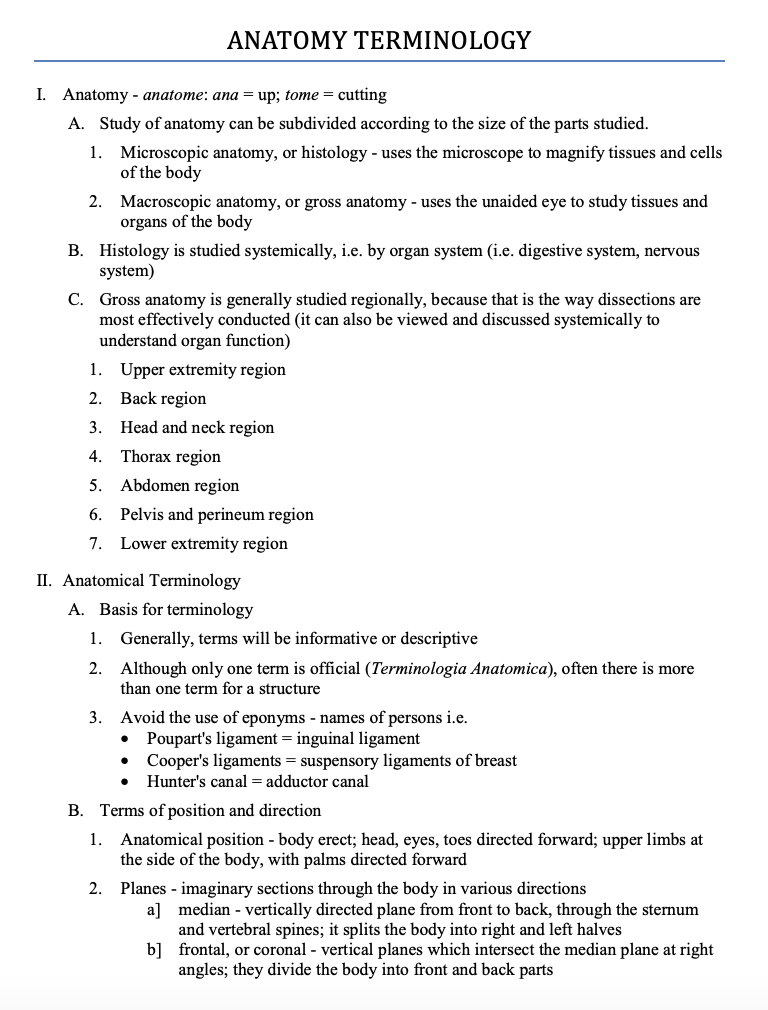Human Anatomy Terminology
Summary:
This text provides an overview of anatomy terminology. It starts by discussing the study of anatomy, which can be divided into microscopic anatomy (histology) and macroscopic anatomy (gross anatomy). The text explains that the organ system studies histology, while gross anatomy is studied regionally. It then introduces anatomical terminology related to position and direction, such as anatomical position, planes of the body, and directional terms.
The text also covers the skeleton, describing different types of bones, their functions, joints, and their classifications. It explains the structures associated with synovial joints, including ligaments and cartilage. The next section focuses on skeletal muscles, discussing their morphology, naming conventions, and different types of muscle movements.
The text briefly mentions the central nervous system (brain and spinal cord) and the peripheral nervous system, including cranial and spinal nerves. It provides an overview of the autonomic nervous system, describing its sympathetic and parasympathetic divisions and their functions. The text concludes with a brief discussion of blood vessels, including arteries, capillaries, veins, and lymphatics.
Overall, the text provides a basic understanding of anatomy terminology, skeletal system, muscular system, nervous system, and blood vessels.
Excerpt:
Human Anatomy Terminology
ANATOMY TERMINOLOGY
I. Anatomy – anatomy: ana = up; tome = cutting
A. Study of anatomy can be subdivided according to the size of the parts studied.
1. Microscopic anatomy, or histology – uses the microscope to magnify tissues and cells
of the body
2. Macroscopic anatomy, or gross anatomy – uses the unaided eye to study tissues and
organs of the body
B. Histology is studied systemically, i.e. by organ system (i.e. digestive system, nervous
system)
C. Gross anatomy is generally studied regionally because that is the way dissections are
most effectively conducted (it can also be viewed and discussed systemically to
understand organ function)
1. Upper extremity region
2. Back region
3. Head and neck region
4. Thorax region
5. Abdomen region
6. Pelvis and perineum region
7. Lower extremity region


Reviews